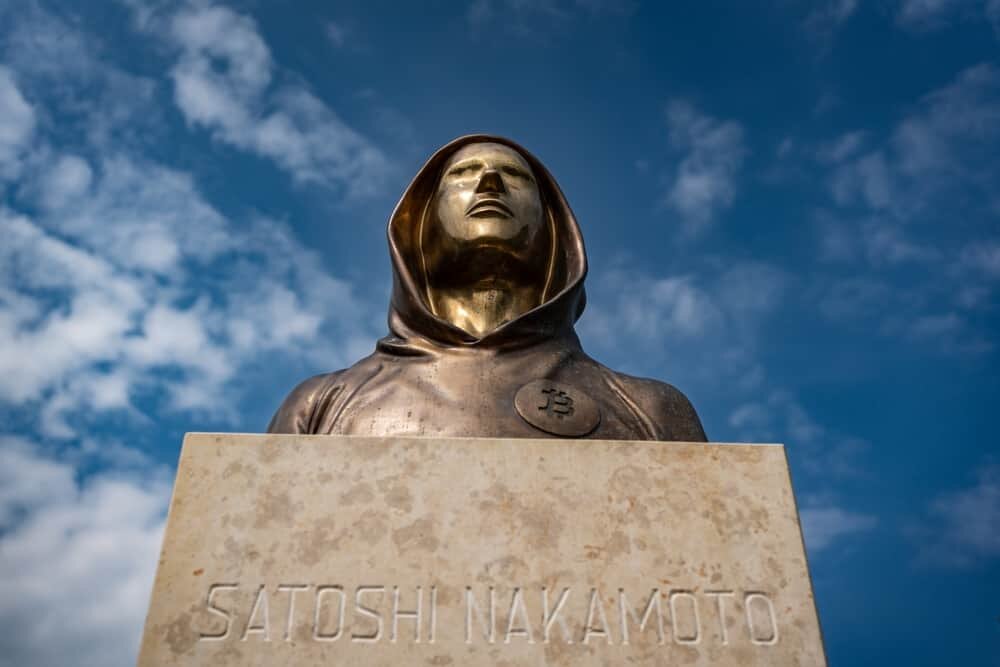Bitcoin, the groundbreaking decentralized digital currency, has revolutionized the global financial landscape. It has disrupted traditional notions of money and introduced a revolutionary concept of peer-to-peer transactions through blockchain technology. Who invented Bitcoin? In this article, we explore the mysteries surrounding the inventor of Bitcoin, delving deep into the theories, evidence, and controversies that have swirled around this enigma since its inception.
When Did Bitcoin Start?
In October 2008, a seminal whitepaper titled "Bitcoin: A Peer-to-Peer Electronic Cash System" appeared on an online cryptography mailing list. Who invented Bitcoin? The author behind this groundbreaking work was a group or individual operating under the pseudonym Satoshi Nakamoto. The whitepaper presented a comprehensive and visionary concept—a decentralized digital currency enabling secure, direct peer-to-peer transactions without intermediaries like banks. Nakamoto's whitepaper outlined the technical foundations and principles upon which Bitcoin would operate. It introduced the concept of a distributed ledger called the blockchain, which would serve as a public record of all Bitcoin transactions, ensuring transparency and security. The whitepaper described using cryptographic techniques to validate and authenticate transactions, safeguarding the system's integrity.
Nakamoto's revolutionary vision sought to address several challenges inherent in traditional financial systems. Bitcoin aimed to provide individuals with direct control over their funds and reduce transaction costs by eliminating the need for intermediaries, such as banks or financial institutions. Furthermore, its decentralized nature aimed to mitigate the risks associated with centralized control and censorship, enabling greater financial autonomy for users. Following the publication of the whitepaper, Nakamoto took further steps to materialize the vision of Bitcoin.
In January 2009, Nakamoto mined the first block of the Bitcoin blockchain, known as the "genesis block." This initial block not only marked the birth of Bitcoin but also embedded a symbolic message in its data, referencing a headline from The Times newspaper. This act emphasized Nakamoto's intent to provide an alternative financial system that was not susceptible to the pitfalls of traditional banking. The genesis block's inclusion of this headline serves as a poignant reminder of Bitcoin's core principles—decentralization, financial sovereignty, and a critique of the existing financial establishment. It symbolized Nakamoto's dissatisfaction with the traditional financial system and the desire to create a new paradigm that empowers individuals and challenges the status quo.
The release of the whitepaper and the mining of the genesis block laid the foundation for the subsequent development and adoption of Bitcoin. In the following years, an enthusiastic community of developers, miners, and early adopters rallied around Nakamoto's creation, working collectively to refine the technology, improve its scalability, and expand its utility. Despite Nakamoto's influential contributions to the birth of Bitcoin, their true identity and personal background remain shrouded in secrecy. While Nakamoto engaged in discussions and correspondence with the early Bitcoin community, providing technical guidance and insights, their interactions were solely conducted online, and verifiable information about their real-world identity has yet to be uncovered. The mystery surrounding Nakamoto's identity has sparked numerous theories and speculations, fueling an ongoing quest to unveil the truth behind the pseudonym. Various individuals have been suggested as potential candidates, drawing attention to their technical expertise, linguistic patterns, or proximity to the earliest stages of Bitcoin's development. However, no conclusive evidence has definitively unmasked the enigmatic inventor, and the true identity of Satoshi Nakamoto remains a captivating mystery.
As Bitcoin continues to grow and redefine the financial landscape, Satoshi Nakamoto's significant contributions to its birth and underlying technology cannot be overstated. The impact of their work extends far beyond the realm of cryptocurrency, influencing the development of blockchain technology, inspiring the creation of countless alternative cryptocurrencies, and paving the way for decentralized applications and innovative financial solutions.

The Mysterious Satoshi Nakamoto
One of Bitcoin's most captivating aspects is the mystery surrounding Satoshi Nakamoto's identity. The name is widely believed to be a pseudonym. Nakamoto's interactions with the Bitcoin community were conducted exclusively online, primarily through forums and email exchanges. During the early stages of Bitcoin's development, Nakamoto engaged in discussions with fellow enthusiasts and developers, providing technical guidance and insights into the design and implementation of the cryptocurrency. However, as Bitcoin gained traction and attention, Nakamoto gradually faded from public view. In late 2010, Nakamoto made their last known communication, stating that they had moved on to other projects and had handed over the reins of Bitcoin's development to a trusted group of collaborators. Since then, Nakamoto has not resurfaced or made any public statements regarding their involvement in Bitcoin. The sudden disappearance of Nakamoto has only deepened the mystery surrounding their identity and motives. Numerous attempts have been made to unveil the true identity of Nakamoto, but all have proven futile thus far. Investigators and enthusiasts have embarked on extensive quests, scrutinizing online records, linguistic patterns, and technical insights to uncover the person or group behind the pseudonym.
However, despite numerous theories and claims, the true identity of Satoshi Nakamoto remains elusive. Several individuals have been proposed as potential candidates for Nakamoto, often based on their technical expertise, involvement in the early days of Bitcoin, or proximity to the development of the cryptocurrency. However, these candidates have yet to be definitively proven to be Nakamoto, and their claims have been met with skepticism and doubts from the wider community. To stay knowledgeable about the recent developments in the cryptocurrency space, consider joining a community where you can connect with like-minded individuals. PlasBit community is a global forum that enables users to engage in discussions, share insights, and enhance their understanding of cryptocurrencies. It serves as a platform for members to connect with fellow enthusiasts.
Bitcoin Theories and Suspected Individuals
The quest to uncover the true identity of Satoshi Nakamoto has given rise to numerous theories and candidates over the years, each with its own set of claims and evidence. Let's explore some prominent theories and suspected individuals that have emerged in the search for Bitcoin's enigmatic creator.
1. Dorian Nakamoto:
Who invented Bitcoin? Dorian Nakamoto gained widespread attention in 2014 when an article published by Newsweek suggested that he was the elusive Satoshi Nakamoto. The article pointed to Dorian Nakamoto's background as a Japanese-American physicist and his involvement in classified defense projects, implying that he had the necessary skills and knowledge to develop Bitcoin. However, Dorian Nakamoto vehemently denied any connection to Bitcoin, stating that he had only heard of it when his son mentioned it in passing. Despite the media frenzy surrounding his potential identification as Nakamoto, the evidence was circumstantial at best, and the claim was ultimately dismissed due to a lack of concrete proof.
2. Hal Finney:
Hal Finney, a highly regarded computer scientist and one of the early contributors to the Bitcoin project, has often been considered a strong candidate for Satoshi Nakamoto. Finney's proximity to Dorian Nakamoto, as they lived in the same neighborhood, fueled speculation that they could be the same person or part of a collective effort. Moreover, Finney's involvement in developing early Bitcoin code and his interactions with Nakamoto in the early days of the cryptocurrency added weight to the theory. However, Finney consistently denied being Nakamoto and maintained that he was simply an early adopter and supporter of the technology. Sadly, Finney's passing in 2014 due to ALS (amyotrophic lateral sclerosis) prevented further exploration of his potential connection to Bitcoin's creator.
3. Nick Szabo:
Who invented Bitcoin? The name Nick Szabo often emerges when this question arises. A computer scientist and legal scholar is known for his work on "Bit Gold," a digital currency concept that predates Bitcoin. Many have drawn parallels between Szabo's ideas and the principles outlined in Nakamoto's Bitcoin whitepaper, leading to speculation that he may be the mysterious creator. Szabo's expertise in cryptography, understanding of decentralized systems, and similar writing style to Nakamoto's have added to the intrigue. However, Szabo has consistently denied being Nakamoto, stating that he is not the creator of Bitcoin but rather an admirer and early researcher in the field.
4. Craig Wright:
In 2016, an Australian entrepreneur named Craig Wright stepped forward and declared himself Satoshi Nakamoto. Wright provided cryptographic proof to support his assertion, including signing messages with the cryptographic keys believed to be owned by Nakamoto. His claim initially attracted significant attention and media coverage, but it was met with widespread skepticism from the cryptocurrency community and experts in the field. Subsequent investigations and analyses by cryptographic specialists pointed to inconsistencies and flaws in Wright's proof, leading to the consensus that his claim was unfounded. Despite his persistent assertions, the general belief remains that Wright is not the actual Nakamoto.
The Search Continues
The search for Satoshi Nakamoto has become a persistent and ongoing endeavor, bringing new theories and speculations each year. Despite the tireless efforts of numerous individuals and groups, the true identity of Nakamoto remains shrouded in secrecy. The elusive nature of Nakamoto's identity has captivated the imagination of cryptocurrency enthusiasts and the wider public, leading to a plethora of conspiracy theories and wild claims. Nakamoto's deliberate efforts to maintain anonymity. Nakamoto effectively shielded their true identity from prying eyes by using a pseudonym and communicating solely through online channels. This level of anonymity was likely a deliberate choice, in line with the principles of decentralization and privacy underpinning Bitcoin. The lack of concrete evidence and the abundance of false leads have further complicated the search for Nakamoto. Many individuals have come forward over the years, claiming to be the real Satoshi Nakamoto, but they have yet to be able to provide irrefutable proof.
These false claimants have often sought attention or personal gain, fueling skepticism and making it even more challenging to separate fact from fiction. Furthermore, the nature of the cryptocurrency community itself adds to the challenge of identifying Nakamoto. Bitcoin was designed to operate outside any central authority's control, and the community's ethos aligns with principles of privacy and independence. This decentralized nature has made it challenging to trace Nakamoto's steps or gather important information that could lead to their identification. In recent years, some investigative efforts have focused on analyzing the early writings and forum posts attributed to Nakamoto. Linguistic analysis and stylometric techniques have been employed to compare Nakamoto's writings with those of suspected individuals. However, the results have been inconclusive, with multiple candidates exhibiting similarities but no definitive match. The search has succeeded despite the need for more progress in unmasking Nakamoto's true identity.
The pursuit has led to valuable insights into the early days of Bitcoin, its underlying technology, and the principles that underpin the cryptocurrency revolution. The quest for Nakamoto has highlighted the global impact of Bitcoin and the broader significance of decentralized technologies in reshaping traditional financial systems. Moreover, the mystery surrounding Nakamoto's identity has fueled public interest in cryptocurrencies and blockchain technology. Bitcoin's enigmatic creator has become a symbol of cryptocurrencies' innovative spirit and disruptive potential, inspiring countless individuals to explore and contribute to the growing field. As the years pass, some have come to accept that the true identity of Satoshi Nakamoto may forever remain a mystery. It is possible that Nakamoto intentionally chose to fade into obscurity, content with the legacy left behind. Others remain optimistic that the puzzle will be solved one day, and Nakamoto's true identity will be revealed.
Contributions and Bitcoin Legacy
The advent of Bitcoin, regardless of the identity of its creator, has had a profound impact on the world of finance and technology. Satoshi Nakamoto's invention introduced a decentralized digital currency that functions outside the control of any central authority, challenging traditional financial systems and opening up new possibilities for individuals worldwide. One of the most significant contributions of Bitcoin is its role in democratizing finance. Bitcoin has empowered unbanked or underserved individuals through a peer-to-peer payment system through traditional banking institutions. In many parts of the world, access to essential financial services is limited, making it difficult for individuals to participate in the economy.
Bitcoin has changed that by enabling anyone with internet access to send and receive money, bypassing the need for intermediaries such as banks. This can foster financial inclusion and empower individuals to take control of their financial affairs. Additionally, Bitcoin has been instrumental in challenging the dominance of traditional banking systems. Its decentralized nature and cryptographic security have introduced an alternative financial system that operates transparently and autonomously. The ability to conduct transactions without relying on trusted third parties has disrupted traditional financial intermediaries and their associated fees and restrictions. Bitcoin has shown that secure and efficient peer-to-peer transactions can be achieved globally without centralized control. Bitcoin's success has also sparked a wave of innovation and inspired the development of numerous cryptocurrencies and blockchain-based projects.
These alternative cryptocurrencies, often referred to as altcoins, have built upon the principles of Bitcoin while introducing additional features and functionalities. For example, Ethereum established the concept of smart contracts, which enabled the creation of decentralized applications (dApps) and paved the way for the emergence of decentralized finance (DeFi). Litecoin, inspired by Bitcoin, aimed to improve transaction speed and scalability. Ripple focused on facilitating fast, low-cost international transactions. These are just a few examples of the diverse range of projects that have emerged in the wake of Bitcoin, collectively expanding the possibilities of blockchain technology and reimagining various aspects of finance, technology, and beyond. PlasBit is committed to enabling easy and secure access to Bitcoin for all.
We offer a user-friendly platform that empowers individuals to engage with Bitcoin confidently. Our top priority is security, backed by ISO/IEC 27001 certification, offline storage, and biometric authentication. We safeguard users' funds with segregated custodial bank accounts. Our financial tools, such as debit cards and seamless crypto-to-fiat conversion, enhance accessibility while upholding rigorous security standards. Through this combination of accessibility and security, we contribute to Bitcoin's legacy as a trusted digital asset, ensuring it remains accessible and safe for everyone. Furthermore, Bitcoin has generated global interest in blockchain technology, leading to widespread exploration and adoption in various industries. Blockchain, the underlying technology of Bitcoin, has proven its potential beyond cryptocurrency applications. Its decentralized, transparent, and immutable nature has attracted attention from sectors such as supply chain management, healthcare, voting systems, etc. By leveraging blockchain technology, organizations can enhance security, increase transparency, streamline processes, and reduce costs. The legacy of Bitcoin lies not only in its success but also in its role as a catalyst for broader blockchain innovation and implementation.
Conclusion
Who invented Bitcoin? The invention of Bitcoin by the elusive Satoshi Nakamoto has transformed the world's understanding of money and financial systems. Despite numerous theories and claims, the true identity of Nakamoto remains unknown. This enigma may add to the allure and mystique of Bitcoin, highlighting its decentralized nature and the power it grants to individuals over their financial lives. Satoshi Nakamoto's creation continues to shape the present and future of finance, leaving an indelible mark on the world. Only time will tell if the true identity of the inventor of Bitcoin will ever be revealed, but the revolution sparked by their creation will undoubtedly endure. To navigate the volatile world of cryptocurrencies, you must equip yourself with the knowledge to help you safely navigate their unpredictable nature. Plasbit provides secure tools for managing your assets and offers a range of articles covering cryptocurrency basics and advanced knowledge. These resources will help users in gaining a better understanding of cryptocurrencies, including Bitcoin.







